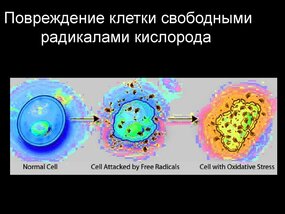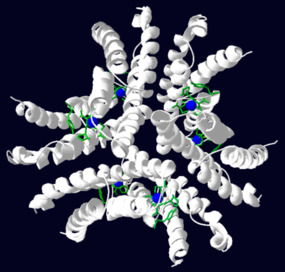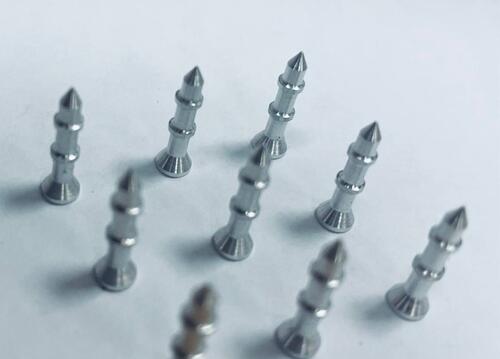An international scientific team from Lomonosov Moscow State University, NUST MISIS, University of North Carolina (USA), and Tambov State University named after G.R. Derzhavin has developed an innovative therapeutic complex based on the superoxide dismutase antioxidant enzyme polymer nanoparticles. The activity of such particles can be “controlled” using a homogeneous low-frequency alternating magnetic field, enhancing the therapeutic effect, if necessary. The technology can be used for effective rehabilitation of patients after acute spinal cord injuries, strokes and heart attacks, and other pathologies accompanied by inflammatory processes. The results are published in the international scientific journal Scientific Reports.
Researchers have created a unique particle with a superoxide dismutase (SOD1) enzyme molecule inside the polymer “coat” and with magnetite as a “control center”. It is about 100 nanometers in diameter and is capable of trapping free radicals inside and neutralizing them according to the “reusable trap” principle. In their work, the developers for the first time have demonstrated that magnetite nanoparticles in a capsule provide the possibility of remote and controlled activation of the SOD1 polyine complex.
In the case of spinal injuries and strokes, in addition to direct damage to nerve fibers, secondary processes associated with initial damage such as overproduction of free radicals (reactive oxygen species) and developing inflammation are also dangerous.
Hypoxia — a pathological process associated with a lack of oxygen — occurs on impact in the case of a spinal injury or a vessel rupture in the event of a stroke (stopping blood flow during arterial spasm or blockage during a heart attack) in the tissues closest to the damaged organ. It blocks the final link of the respiratory chain in the cells and causes the formation of an excessive amount of free radicals. They, in turn, have a destructive effect on cell membranes and trigger a chain of reactions leading to cells and tissues damage and death. These complications lead to additional damage to the spinal cord and the death of neurons, exacerbating the clinical picture.
“One of the possible solutions to the problem of the pathological formation of free radicals in case of acute spinal injury or stroke, as well as other pathologies accompanied by inflammation, could be the delivery to the lesion site of a therapeutic drug complex based on synthesized magnetic nanoparticles containing a natural absorber of free radicals — an antioxidant enzyme superoxide dismutase (SOD1), — said the professor of the chemical faculty of the Lomonosov Moscow State University, Deputy Head of the Laboratory “Chemical Design of Bionanomaterials”, Doctor of Chemical Sciences Natalya Klyachko.
Prompt delivery of such a substance to a damaged organ can alleviate oxidative stress against the backdrop of free radicals excess and stop the tissue destruction process. However, a significant problem is the instability of the SOD1 enzyme in the bloodstream upon intravenous administration to the patient: it is rapidly destroyed, not having time to carry out its “work” to neutralize free radicals.
“To create a stable therapeutic complex based on SOD1, we developed the catalytically active superoxide dismutase nanoforms, the so-called ‘nanowires’, and modified them with magnetite nanoparticles,” explains one of the authors of the development, Head of the Biomedical Nanomaterials Laboratory at NUST MISIS, Ph.D. Maxim Abakumov.
Magnetite in the composition of such a multilayer polyionic complex SOD1 makes it possible to “control” the release of the enzyme in the area of injury using the action of a low-frequency alternating magnetic field.
The team is currently preparing for the start of the preclinical development phase.






